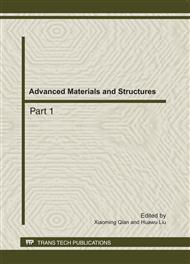p.1308
p.1312
p.1316
p.1321
p.1327
p.1334
p.1340
p.1344
p.1348
Sp2 Hybridization Effects on Friction of Diamond-Like Carbon Film (110) Surfaces Studied by First Principles Molecular Dynamics
Abstract:
The influence of sp2 hybridization on friction and structure of diamond-like carbon (DLC) films was studied by first-principles molecular dynamics. First-principles calculations have been performed using the pseudo-potential plane wave method. Our results show that: 1) The buffer role of sp2-hybridized state carbon between grain boundaries greatly affected the residual stress of DLC film, and hence the friction decreased steadily with the increased in sp2 hybridization content. 2) For thinner films, there was very greatly differences in stress between diamond-like carbon film (110) surfaces in <001> and<1-10> directions. The difference in friction force between soft and hard directions was nonexistent, when the sp2-hybridized state carbon atoms increased to 80%, perhaps because the originally hard C-C and C-H bonds changed, and steadily reject interaction was drive break.
Info:
Periodical:
Pages:
1327-1333
Citation:
Online since:
September 2011
Authors:
Price:
Сopyright:
© 2011 Trans Tech Publications Ltd. All Rights Reserved
Share:
Citation:


